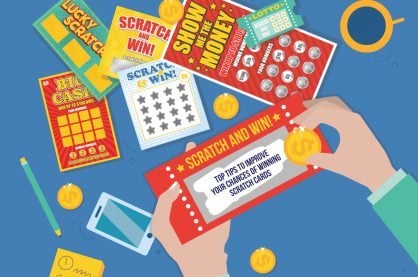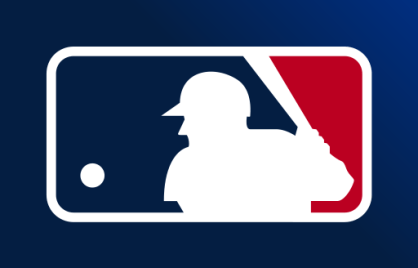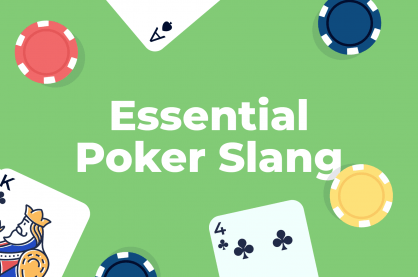Unlock Winning Strategies: Learn to Leverage the Dealer’s Upcard in Blackjack
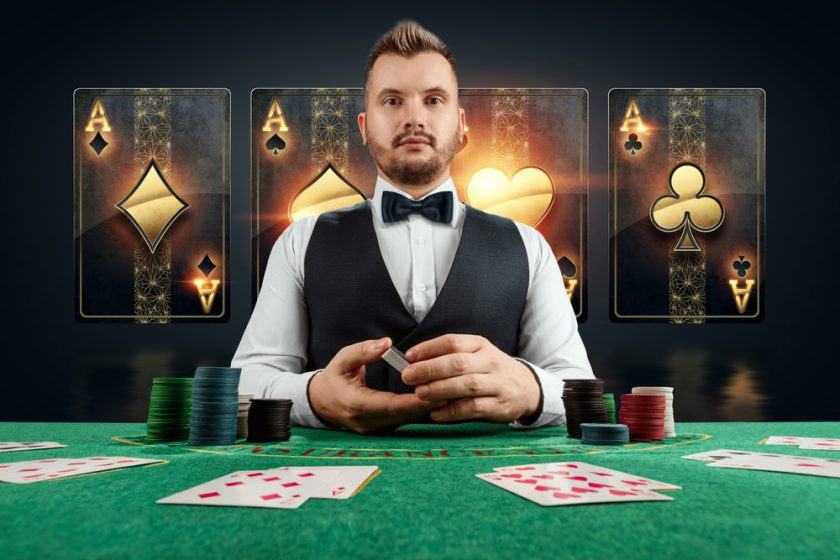
Dealer’s Upcard in Blackjack: What You Need to Know
- Importance of Dealer’s Upcard: The dealer’s upcard in blackjack is a vital component in a player’s strategy. Knowing the dealer’s upcard will help you make decisions about whether to hit, stand, double down, or split.
- Evaluating the Dealer’s Upcard: Cards with values of 7 up to Ace are considered ‘strong’ upcards, while those from 2 through 6 are seen as ‘weak’. If a dealer has a ‘strong’ card, they have a higher chance of making a good hand.
- Player Strategies Based on Dealer’s Upcard: The dealer’s upcard can significantly influence player strategies. For instance, if a dealer has a ‘weak’ upcard, a player has an advantage and can adopt more aggressive moves. Conversely, if it’s a ‘strong’ upcard, players may be more conservative in their decisions.
- Predicting Dealer’s Outcome: By understanding the probability of different outcomes based on the dealer’s upcard, players can better predict the dealer’s final hand total. For example, if the dealer’s upcard is a 4, they’ll likely bust more than 40% of the time.
- Guidelines for Decision Making: There are various charts and strategies available for players to determine their move based on the dealer’s upcard. These include the basic strategy charts, which provide statistically best decisions to make in each situation.
Understanding the dealer’s upcard in casino blackjack is key in making smart decisions during the game. This one card can tell you a lot about the dealer’s position and guide your next move.
In this article, we’ll show you how to use the dealer’s upcard to win more often at blackjack. You’ll learn how to turn this simple piece of information into a powerful strategy.
Let’s dive in!
Why is The Dealer’s Upcard Important For Blackjack Strategy?
Most casino blackjack games are called dependent games. This means that every card that has been dealt out – and, therefore, visible to all the players – will have a direct influence on the cards yet to be played.
What this means is that the cards left in the deck – and still left to be played – are directly dependent on the cards already played. The more the players can see of the cards already played, the better and easier their betting and wagering strategies can become. This is particularly important if you are counting cards.
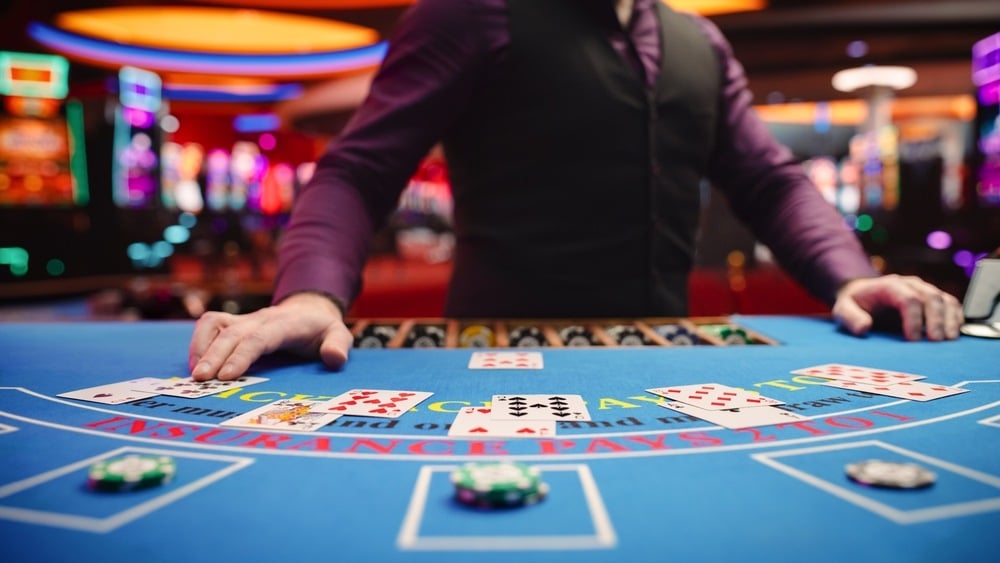
Image Credit Kitreel/Shutterstock
Planning Your Blackjack Plays
Being able to see the dealer’s upcard at the beginning of a live dealer blackjack game – and for the playing and wagering decisions for the next round – is very important. That is because now you can see what the dealer’s hand might be in the current hand. In addition to all the other cards – in the other player’s hands, which will eventually also be revealed face up – you can also now make better decisions for the next deal.
Dealer’s Upcard Example
For example, if the dealer’s upcard is, say, 2, 3, 4, 5 or 6, then it is easier to assume that the two-card dealer’s had may be a bad one, and perhaps a candidate for busting. This can then influence your decision in the current hand.
So, if you have, say, a hard-16, and the dealer’s upcard is a 6, then it is in your best interest to stand, and not hit your head. Similarly, if you have, say, a hard-17, and the dealer’s upcard is 8, 9, 10 – or face, or ace – then you are more likely to consider hitting the hand, instead of just standing.
There are many such examples of decisions which you can make because you can see the dealer’s upcard, and that is why this card is so important in blackjack.
What Are The Dealer’s Rules For Upcards?
The blackjack dealer must turn one of their cards face-up before asking players to make their playing decisions for each specific hand, or round, of play. The dealing rules stipulate that the dealer deals one-card to each player, in turn, beginning right-to-left of the player’s view – which is left-to-right from the dealer’s view.
When all the active players at the table have been dealt their first card, the dealer will then deal themselves their first card as well. then the dealer will begin to deal the second card to all the players, in the same procedure as for the first card, and, at the very end, deal themselves their second card.
So far both dealer’s cards are face-down, and not exposed. It is the standard dealing procedure for blackjack that after the dealer deals themselves their second card, they will then use that card to “flip over” their first card face up, and that, therefore, this then becomes the dealer’s upcard. then the dealer will slide their second card face-down and under their now-exposed first card, and then the hand in progress can continue.
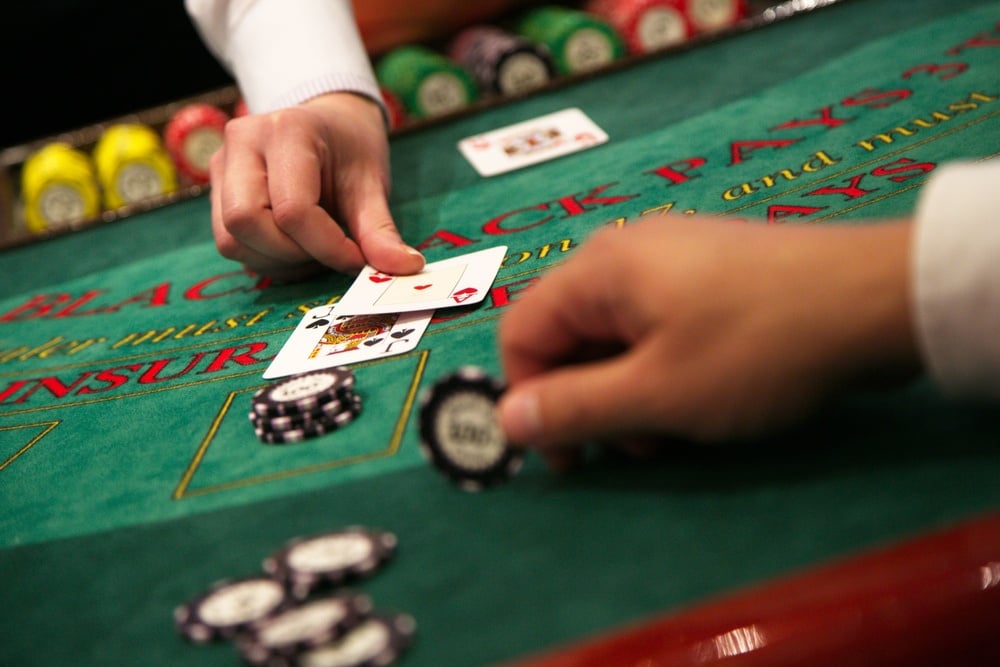
Image Credit Netfalls Remy Musser/Shutterstock
Taking an Insurance on a Dealer’s Ace
If the dealer’s upcard is showing an ace, then the dealer will ask each player if they want insurance, and will either accept such bets from each player, or acknowledge their decision to decline this insurance option. once all players have made their decision on insurance, the dealer will then “peek under” their second card, carefully so as to not show what it is, and then – if they do have a blackjack (natural 21) they will then turn the second card over as well as their first, and the current hand in play is now over.
The dealer will then collect all bets which did not buy insurance, acknowledge any hand which is a “push” – for players who also have a blackjack at the same time – and then pay off those players who did purchase insurance, when it was offered to them. and then the next hand will be dealt.
However – if the dealer does not have a blackjack after checking their second card, then they will simply leave it tucked under their first card, as before, and now the remainder of the current hand can continue. The dealer will then collect any of the insurance bets – which have now lost – and then ask each player – in turn, as before – to make their playing decisions, and each such player’s hand will then be decided in turn.
Hit or Stand
Once all players have made their decisions – and for those players still left in the current hand – the dealer will then turn over their second card, exposing it, and showing their two-card total. if the hand is less than 17, the dealer will have to hit. and – depending on the table rules – if their hand is a soft-17, then they will also have to hit.
But if their hand is either a hard-17, 18, 19, or 20, then the dealer will stand, and all remaining player’s hands will win or lose depending on these totals, versus the player’s hand totals for that round of play. and now the dealer will scoop up all the played cards, place them in the discard tray. The next hand – the next round – will now begin, and the procedures will be repeated as before.
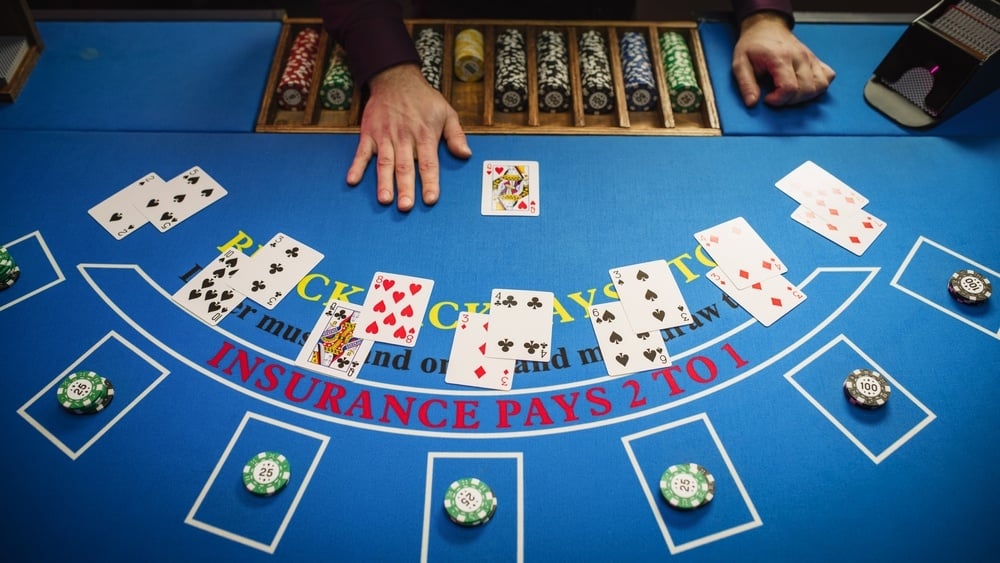
Image Credit Kitreel/Shutterstock
Does The Dealer in Blackjack Have an Edge Over The Players?
Short answer: no.
In blackjack, the dealer is not a participant in the game. The dealer is there only to deal the cards. and they deal the cards in accordance with the rules of the game of casino blackjack, and the rules of the casino in which this game is being played. The rules of blackjack are firmly standardized – for traditional blackjack games – and therefore there aren’t any derivative or different decisions to be made by the dealers.
What About House Edge?
The “house edge” in casino blackjack comes from the standard strategy for the general rules of blackjack, which stipulate that – using perfect basic strategy – casino blackjack has a house edge of about 0.54%. but this house edge can be much higher, depending on various rule variations which that specific casino chooses to use.
An Example of House Edge
For example, if the casino chooses to play blackjack to the game’s optimal rules – with all of the player-advantageous rules in play, such as early-and-late surrender, double down after splits and re-splits, split and re-split aces multiple times, and so on.
The standard mathematical probabilities of the game indicate that the house can expect a return, or house edge, of about 0.54% on the game. This assumes all of the “good” rules, and also assumes that all the players can play with perfect basic strategy. which is not easy to do, of course.
What is PPEV in Blackjack?
If all these “good” rules are used, then the players can also count cards, and use other playing skills, and this can turn the game of blackjack into what is known as a “player-positive expected value,” or PPEV. This is what all those movies are about, with experts counting cards, and so on.
Theoretically, this can produce a PPEV of up to 1.7% over and above, and in the player’s favor, or PPEV. or even more.
However – most casinos will not allow all of the “good” rules, and they will frown on anyone using their blackjack playing skills so successfully. and this means that the “actual” house edge on casino blackjack is in reality a lot more than the “theoretical” edge allows.
And then there is the “human” factor. Simply put, most players just play really badly, and so the house edge on blackjack very often can be around 20%, or even more. This, of course, depends on many factors applicable to the moment, and that game, that table, and that specific casino at the time.
Blackjack Variations
It is also important to note that there now are many blackjack variations and derivatives, such as games with side bets, or games like Spanish-21, where some of the cards are removed from the decks, and so on.
All of these are what is known as “gimmicks,” and the only reason they exist is because they add an enormous extra percentage to the house edge on this game.
These games are not to be confused with traditional blackjack – because, while they may look the same, and even seem to play the same – they are not. so it is important for you to know the difference.
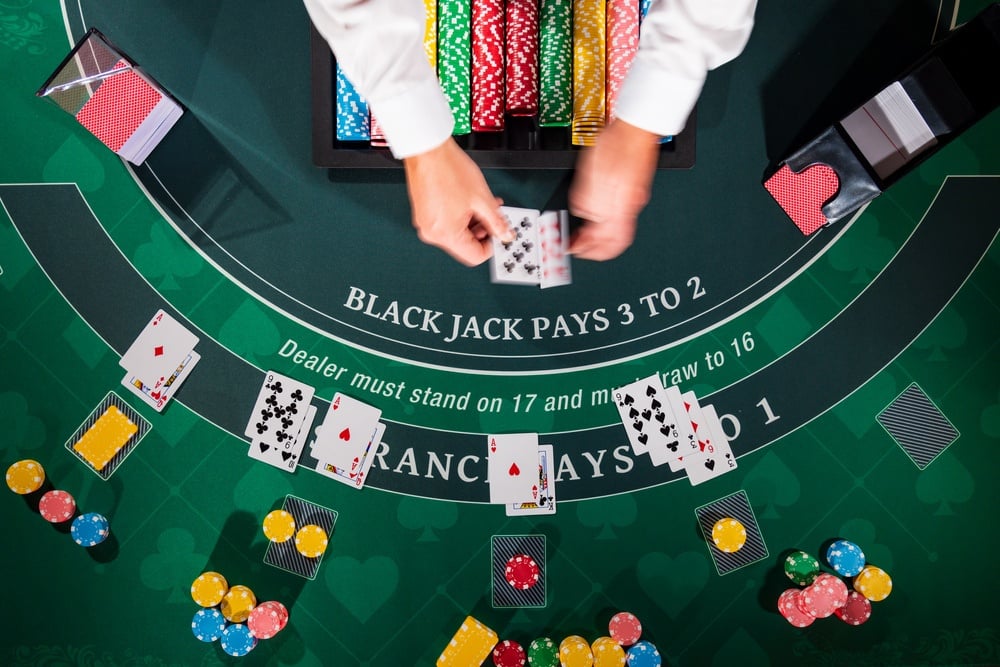
Image Credit Marko Aliaksandr/Shutterstock
How to Read The Dealer’s Upcard
The dealer’s upcard will show the respective value of that card, the same way as that card would be valued if it had been dealt to any player. These blackjack card values the same for all players and the dealer, and are the standard card values for the game of blackjack.
Face cards are valued at 10, the ace is valued as 1 or 11, and all other cards are valued with the number printed on them. so, the “10” card is valued as 10, the “9” card is valued as 9, and so on.
Basic Strategy Adjustments Based on The Dealer’s Upcard
Being able to see what value is shown in the dealer’s upcard allows the players to make more informed judgments as to the possible two-card value of the dealer’s initial two-card hand.
For example, if the dealer’s upcard is, say, a 6, then this means that the dealer’s hand could bust, because the dealer will most likely be required to draw additional cards, and this may be in the player’s favor.
For example, if your hand is, say, a hard-17, and the dealer’s upcard is showing 8, 9, or 10, then it is likely that your hand may have already lost, and, therefore, you may be better off to hit the hand instead. Both these examples are also important if you are counting cards, or keeping track of cards, because these can also affect your other playing decisions, or hands and cards yet to be played.
When to Hit, Stand, and Double-Down Based on The Dealer’s Upcard
- If the dealer’s upcard is a 4, 5 or 6, and your hand is 14, 15, or 16, it is best to stand.
- If the dealer’s upcard is a 8, 9, or 10 – or ace, but no dealer blackjack – and your hand is a hard-17 or less, then it is best to hit.
- If the dealer’s upcard is 3, 4, 5, or 6, and your hand is 9, 10, or 11, then it is good for you to double-down.
- If the dealer’s upcard is 2, 3, 4, 5, 6, 7, 8 or 9 and your hand is 8-8, or 7-7, or 6-6, or ace-ace, then it is best for you to split the hand.
These are just some of the most common decisions which are possible due to you being able to see the dealer’s one upcard. The remainder of these decisions are available in the blackjack basic strategy charts, which are available everywhere.
Do You Hit 17 When The Dealer’s Upcard is a 10?
If it is a soft-17, then yes, always. if it is a hard-17, then yes, most of the time. why not always? because that depends on how good you are as a player.
If you are good at counting cards, or at least keeping track of the cards already played, then you can make better judgments about the cards still left to be played, and this, therefore, will influence your decision to hit a hard-17.
If you know that the remaining cards yet to be dealt are rich in 10-value cards, then it will be better to stand, and not hit. If you know that the remaining cards are rich in “small” cards, then it may be to your advantage to hit. generally, overall, however, the answer for casual players is always: yes, hit.
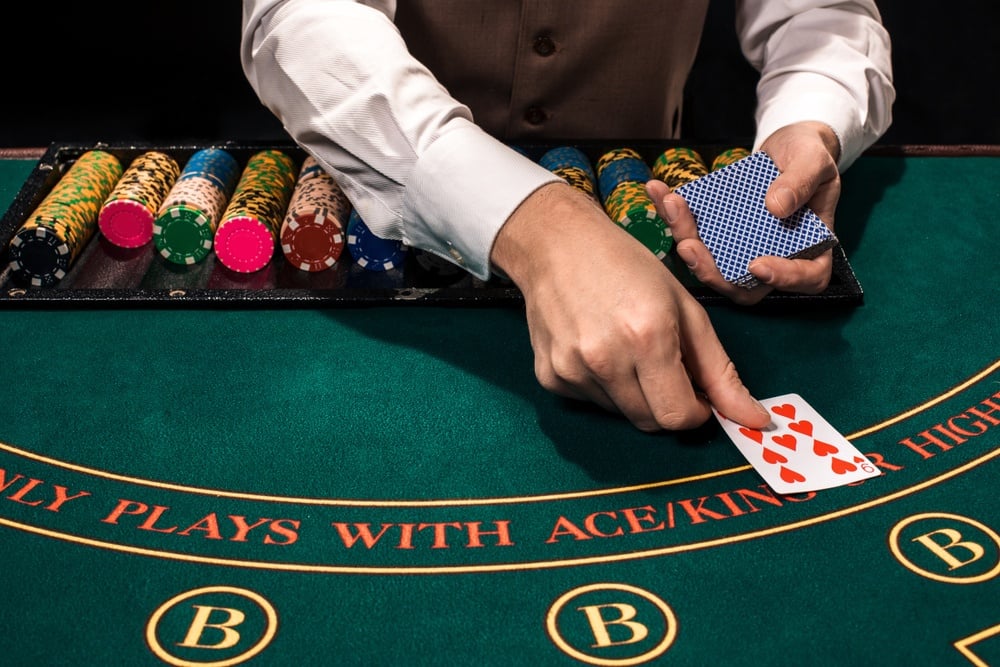
Image Credit Marko juliannedev/Shutterstock
Importance of Choosing The Right Blackjack Table
In the real world casino, blackjack games are played in many different ways, which are not all the same, or of better value to you, as a player. For example, in the casino pit, you may see several blackjack tables and games which all look the same – at least from the casual overview. But – be careful!
That’s because this can be subtly deceptive. One blackjack game can have a table layout which says blackjack pays 3:2, while the next game may have a layout which says blackjack pays 6:5.
Do you know the difference? Most people don’t, and so they find themselves caught in the 6:5 game, and as a result are now playing a game which adds about another 1.7% to the house edge simply because of this one small rule change! This is about a 400% increase, and that is a big difference indeed!
Is Soft 17 in Play?
Another small change is the soft-17 rule. On some blackjack games it may say on the table layout: dealer must stand on all 17. On others – and on almost all games today, but not quite all as yet – it will instead say ‘dealer must hit soft 17’. This adds another 0.2% to the house edge, so – not good for you!
There are many such small and subtle changes in the way that casino blackjack is being offered, and played in live casinos, so it is very important indeed for you to pay careful attention to what you are getting before you sit down to play.
The same applies to online casinos, because they also offer different versions and variations of the game of blackjack, and so you need to carefully read all the rules before you invest your money in such games.
And now you know!
Title Image Credit Marko Aliaksandr/Shutterstock
